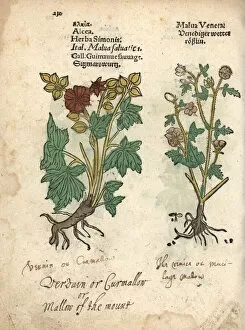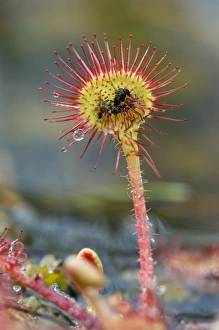Mucilage Collection
"Mucilage: Nature's Sticky Secret" Discover the fascinating world of mucilage, a sticky substance found in various plants and organisms
All Professionally Made to Order for Quick Shipping
"Mucilage: Nature's Sticky Secret" Discover the fascinating world of mucilage, a sticky substance found in various plants and organisms. From the Greater musk-mallow to Psyllium, mucilage plays an essential role in their survival. In a vintage Army and Navy Stores Catalogue from 1939-40, one can find references to mucilage as it was used for various purposes during that time. But let's delve deeper into its natural origins. Imagine a Round-leaved Sundew leaf covered in glandular hairs with sticky mucilage glistening under the sun on lowland heathland. This carnivorous plant uses its trap-like structure to capture unsuspecting insects, providing vital nutrients for its growth. Moving on to Blue Green Algae Nostoc C014 / 3088 and Nostoc C014 / 3089, these microscopic organisms also produce mucilage. They form slimy colonies that can be found in diverse habitats like soil or water bodies. Now let's explore the Portuguese Sundew - Drosophyllum lusitanicum - where new leaves are adorned with glandular hairs secreting sticky mucilage. This unique adaptation helps this sundew species catch prey efficiently. Returning to our beloved Round-leaved Sundew (Drosera rotundifolia), we witness its incredible ability to ensnare insects using glandular hairs coated with sticky mucilage. Whether it be Italy or Derbyshire, England, these plants thrive by trapping unsuspecting flies for sustenance. The beauty of nature lies not only in grand landscapes but also within intricate details such as the round-leaved sundew's close-up view of glandular hairs oozing sticky mucilage. These stunning visuals can be witnessed at Hothfield Heathlands in Kent, England during August when these plants are at their prime. Mucilage serves as both a defense mechanism and a nutrient source for many organisms.














